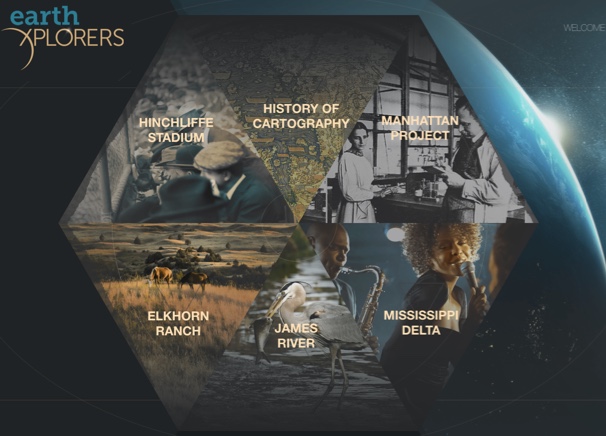Fun with GIS 218: EarthXplorers
- Subscribe to RSS Feed
- Mark as New
- Mark as Read
- Bookmark
- Subscribe
- Printer Friendly Page
Experienced GIS users (even K12 students) often speak in terms of custom projects. This is where GIS helps students be at their most powerful -- digging into a topic of one's choosing, allowing the user to explore, analyze, and customize at will. Tom Baker's blogpost on instructional materials and this Instructional Use of GIS document from Esri's T3G Institute show custom projects at the "high end" of learning activities. But it's tough to start there.
GeoInquiries let teachers and students jump into "core content" through maps. Their primary intent was as intro in situations where educators want quick nuggets and focused guidance. Some educators are going beyond the original purpose of GeoInquiries, enhancing and saving the maps as their own, but that takes some experience.
EarthXplorers was designed as a free, powerful guide along the path toward projects. Built by the Learning Technologies Media Lab at the University of Minnesota, with rich content support from the National Trust for Historic Preservation, this is a "scaffolded guide to learning the GIS project process." Six modules invite users to investigate historical sites and contexts, working with one's ArcGIS Online Organization account along the way. After walking through a carefully crafted activity with rich supports, students are challenged to turn around and apply the same tools and processes on a local project.

The best module for starting out is the "History of Cartography," which gives users interesting background about mapping and essential instruction about the ArcGIS Online environment. After that, users could do any of the other five projects in any order, as appropriate to time and interests: Elkhorn Ranch, Mississippi Delta, James River, Hinchliffe Stadium, and Manhattan Project. Through it all, a teacher management system helps teachers track and review student work. While big screens are always a help with GIS, EarthXplorers can work effectively in a 1024x768 environment like a tablet. (As always with online mapping, adequate bandwidth to handle each computer is a critical resource.)
GIS has unlimited capacity for instruction, but it takes experience to engage in the most powerful ways. Just as one doesn't start pole vaulting at 19 feet, projects require important skills that take time and experience to establish. The resources of EarthXplorers can help educators who want students to step into projects, but would like to provide students "project training wheels" to keep them upright at the beginning.
You must be a registered user to add a comment. If you've already registered, sign in. Otherwise, register and sign in.
-
Administration
78 -
Announcements
80 -
Career & Tech Ed
1 -
Curriculum-Learning Resources
257 -
Education Facilities
24 -
Events
72 -
GeoInquiries
1 -
Higher Education
595 -
Informal Education
281 -
Licensing Best Practices
91 -
National Geographic MapMaker
33 -
Pedagogy and Education Theory
224 -
Schools (K - 12)
282 -
Schools (K-12)
272 -
Spatial data
35 -
STEM
3 -
Students - Higher Education
245 -
Students - K-12 Schools
128 -
Success Stories
36 -
TeacherDesk
1 -
Tech Tips
117
- « Previous
- Next »